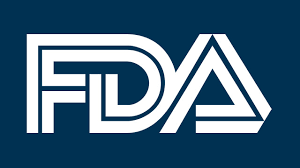The FDA recently released the agenda for the Drug Supply Chain Security Act (DSCSA) guidance documents it plans to release in 2017. The document outlines revised drafts, and new guidances CDER will be releasing, with some of the documents already issued.
The FDA is good at keeping the suspense, as the agency took its time publishing some of the last year’s guidance documents until December 2016, when it went on a publishing blitz. The agency issued four new draft and final guidance documents for drug compounders and two track-and-trace implementation programs under the DSCSA – Identification of Suspect Product and Notification Guidance for Industry [PDF]. Read our coverage and insights here.
Now, let us briefly see the scope of the planned draft guidance documents related to DSCSA and supply chain security we can expect this year:
Annual Reporting by Prescription Drug Wholesalers and Third-Party Logistics Providers: Questions and Answers. This particular draft guidance is new, published on January 10, 2017.
Note: this draft guidance impacts “authorized party” for DSCSA transactions (not traceability, serialization or verification regulations or implementation), provided the data be in the FDA licensure database.
It addresses the reporting procedures, related questions and details on the FDA’s expectations as to what information the agency wants to see in the annual reporting for licensure wholesalers and third-party logistics providers have under DSCSA. The convenient Q/A format helps you navigate the information with ease, and describes:
- what entities must report and under what circumstances (manufacturers distributing their produce, third-party logistics providers).
- means of reporting (XML file via FDA ESG, or CDER website).
- what information must be provided in the reports, such as licenses.
- when the agency expects the reports (annually is obligatory while there may be incremental updates).
Category – Procedural
- Grandfathering Policy for Packages and Homogenous Cases of Product Without a Product Identifier (for pharmaceuticals without product identifiers that are in the supply chain after the serialization deadline is due).
- Identifying Trading Partners under DSCSA.
- Product Identifier Requirements under DSCSA – Compliance Policy.
- The Product Identifier for Human, Finished, Prescription Drugs (questions and answers regarding SNI and other serialization data, as well as barcode carriers).
- Standardization of Data and Documentation Practices for Product Tracing.
- Verification Systems under DSCSA for Certain Prescription Drugs.
- Information on How to Apply for a CDER Certification of Pharmaceutical Product (CPP) Export Certificate.
- Waivers, Exceptions, and Exemptions from the Requirements of Section 582 of the Federal Food, Drug, and Cosmetic Act.
Category – User Fees
- Fees Incurred Under the DSCSA.
Category – Pharmaceutical Quality/Manufacturing Standards (CGMP)
- Repackaging of certain drug products by pharmacies and outsourcing facilities.
As you can see, the FDA plans to issue quite a handful of DSCSA-related guidances this year. It is worth noting the majority of these documents are relics from the past year’s agenda except for a few new ones. The new additions are The Product Identifier for Human, Finished, Prescription Drugs Q/A, Identifying Trading Partners Under the DSCSA and the Fees Incurred Under the DSCSA. The rest were initially scheduled for release in 2016; see our brief roundup of the last year’s list here.
Considering the FDA is “a little” overdue with many of the items on its 2016 agenda, there does not seem to be any unexpected items on this year’s list. There are many questions pending that the agency needs to clarify. For example, the industry is expecting for the guidance on verification systems to detail on the definitions of a diverted product and a fraudulent transaction under the DSCSA definition of the suspect and illegitimate products. This topic is important, and the agency needs to address the proliferation of shortage drug diversion and price diversion schemes. The industry is hopeful the new guidance can change that situation.
Typically, the wholesale distribution of prescription and shortage drugs by pharmacies (including those licensed for wholesale distribution) is prohibited according to provisions of contracts with primary wholesale distributor suppliers. Hence, the FDA should define such activity as a diversion. Another event that is supposed to be designated as a diversion is the wholesale distribution of discounted produce by pharmacies that violate their own-use and/or closed-door pricing arrangements with primary wholesalers. More so, the drugs diverted by pharmacies engaging in such schemes are very likely to be the subject of fraudulent transactions. Therefore, the FDA should define them as suspect products under DSCSA. Or, so we expect.
If the agency gives more attention to the general diversion schemes in its future verification systems guidance, it will motivate the trading partners to find working solutions to this problem on their end. For example, restricting the shipment of products to pharmacies known to engage in such diversion schemes would be a strong message.
We will keep you updated as the agency releases new guidance documents from the list, providing the digestible overview of their impact on the drug supply chain.
Find the full FDA Guidance Agenda: New & Revised Draft Guidances CDER is Planning to Publish During Calendar Year 2017 text here.
About TrackTraceRx Suite
Other solutions on the market today are totally fragmented by only providing one piece of the puzzle. Pharmaceutical companies today are stuck subscribing to multiple services, accessing different companies for support and paying thousands of dollars to integrate different systems. The TrackTraceRx Suite is a game changer by combining the TrackTraceRx Traceability Solution, a ERP, and a Commerce Platform completely integrated out of the box. This eliminates having to deal with multiple support, feature services and integration costs.




